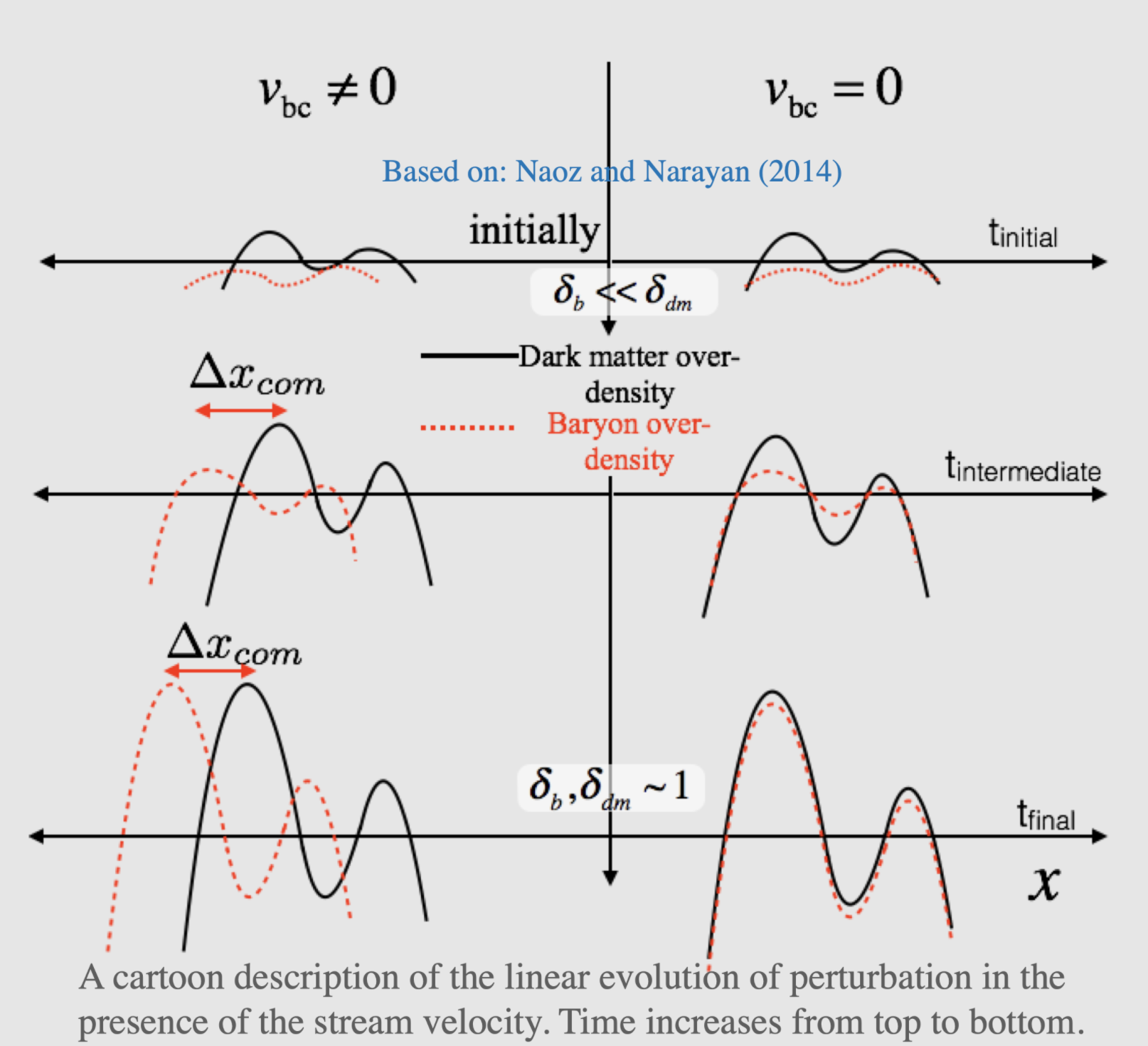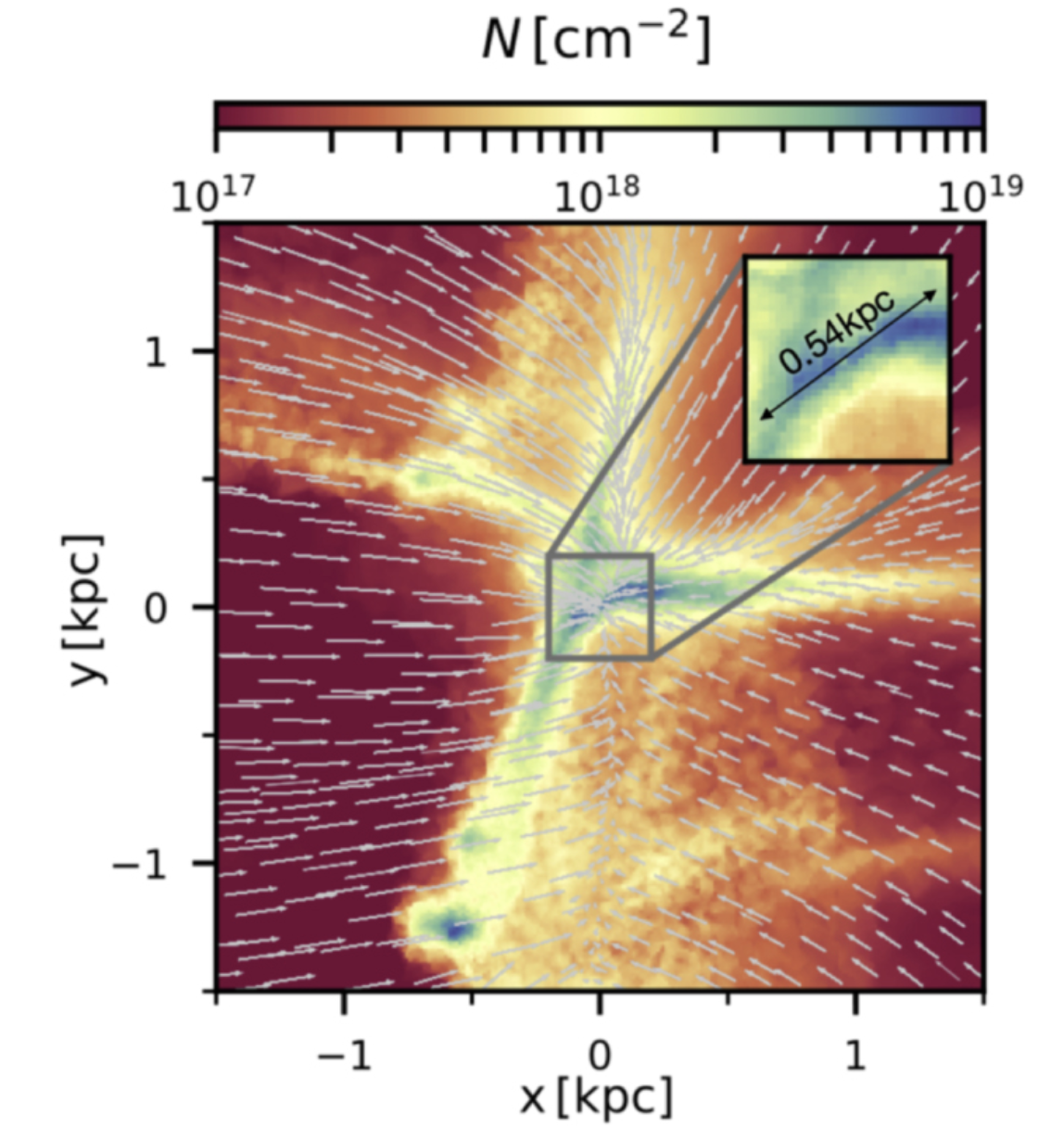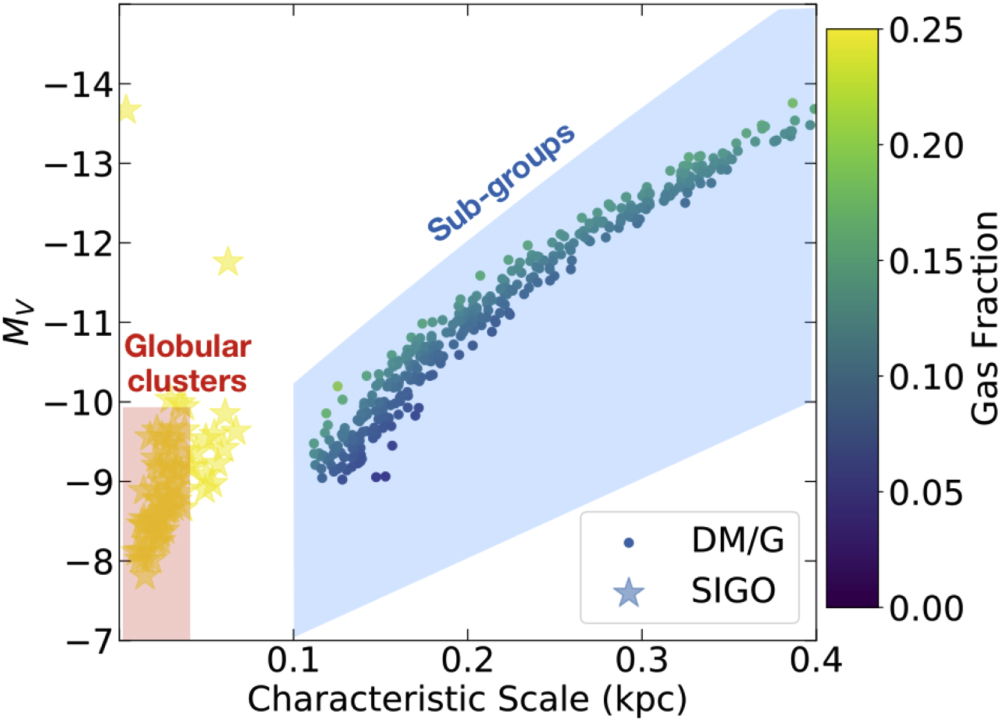SIGOs and the Supersonic Project
The Stream Velocity and Structure Formation
The ΛCDM cosmological model posits that our universe consists of ordinary baryonic matter, cold dark matter, and dark energy–the cosmological constant "Λ". In the early universe (prior to Recombination) baryonic matter was strongly coupled to radiation, forming a hot, homogeneous plasma. Tiny overdensities in both the baryonic matter and the dark matter were seeded during the inflation of the universe, but the radiation prevented growth of baryonic overdensities. Because there was no interaction with photons, the dark matter's overdensities were able to grow, as dark matter particles simply followed their spacetime geodesics, and were attracted to the overdensities gravitationally. In this manner, by the time of Recombination, the dark matter overdensities had grown five orders of magnitude larger than the baryonic overdensities.

During Recombination, the universe became cool enough for protons to combine with electrons and form neutral hydrogen. This decoupling of the baryons from radiation allowed the baryons to begin to fall into gravitational wells, which existed because of the large overdensities in dark matter as well. In the standard picture of structure formation, the baryons simply fell into the dark matter potential wells and thus collapsed in the same place as the dark matter. This resulted in the formation of structures such as galaxies seen today, which have a baryonic component and a smaller baryonic component in the center (roughly 1/5 the mass).
This picture is complicated by the inclusion of the relative velocity between baryons and dark matter. Traditionally, the growth of structure in the epoch after Recombination was treated with linear perturbation theory, and the relative velocity between the components was neglected as a second order term. However, Naoz & Narayan (2014) showed that with a magnitude of over five times the speed of sound in the baryonic plasma, the relative velocity is non-negligable, and has important implications in structure formation.
Figure (Right): Cartoon representation of an introduced phase separation between baryonic and dark matter overdensities in the time before non-linearity and its time evolution. The phase separation corresponds to a physical separation between the center of masses of the baryonic and dark matter components.

